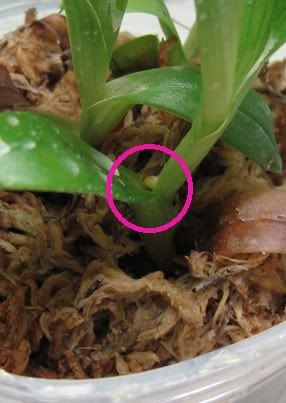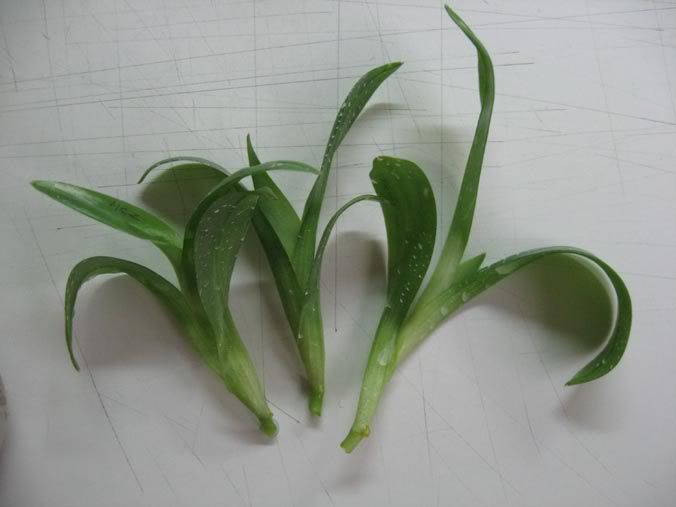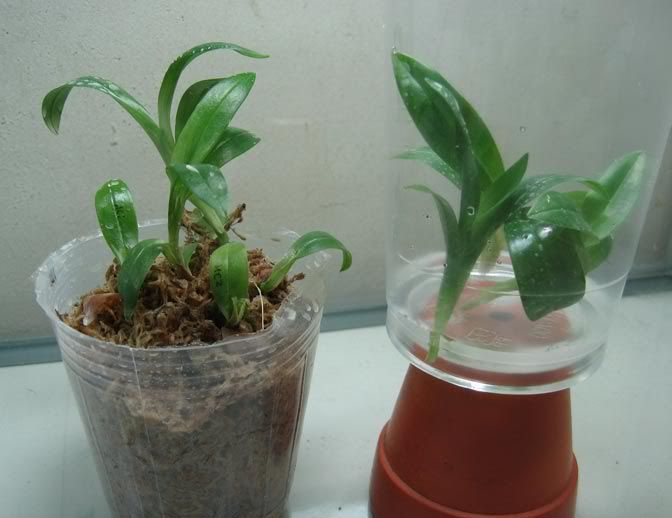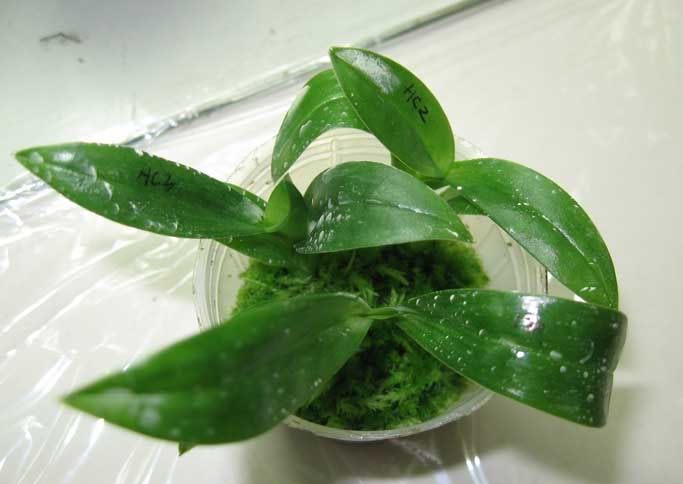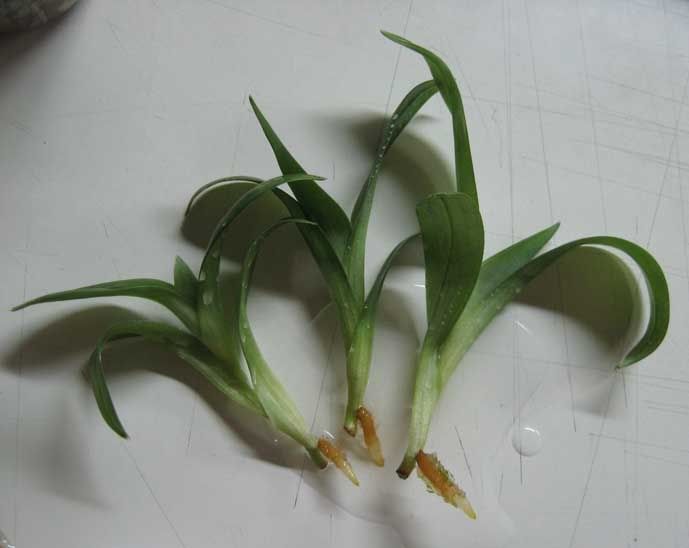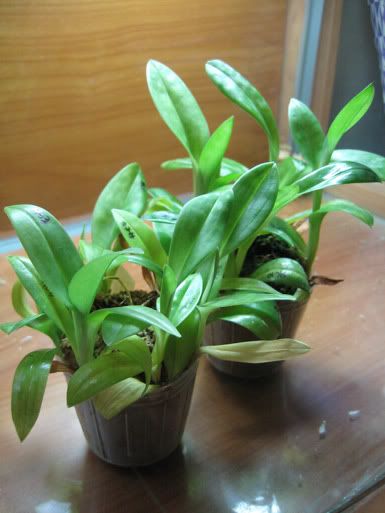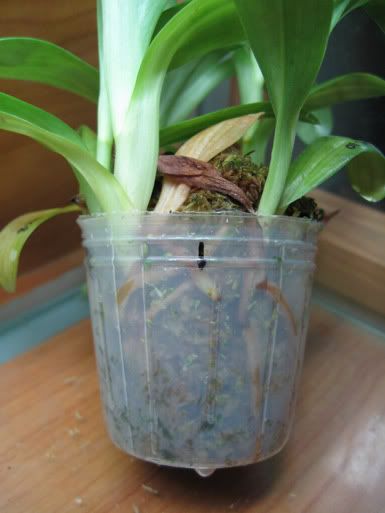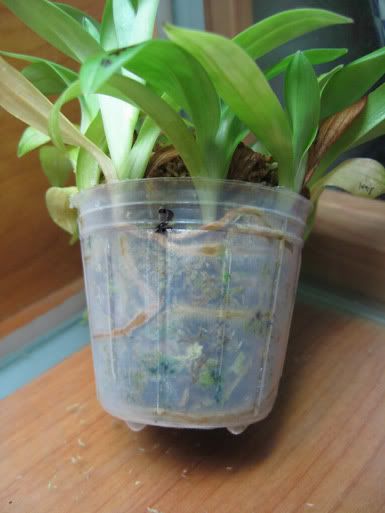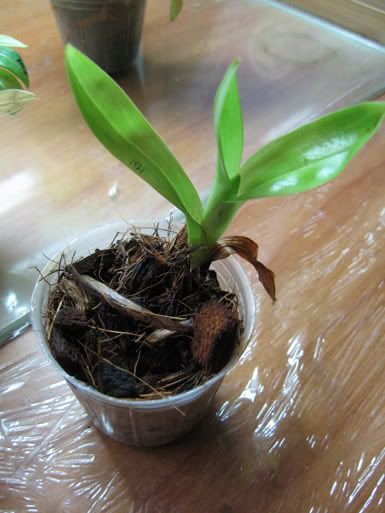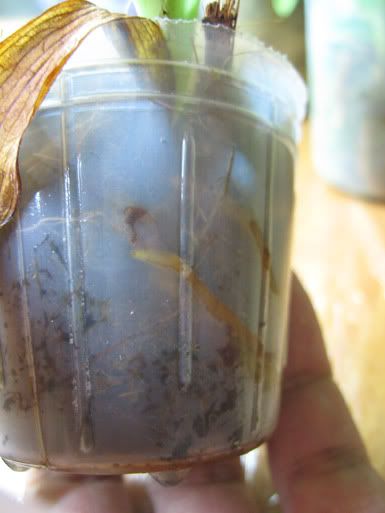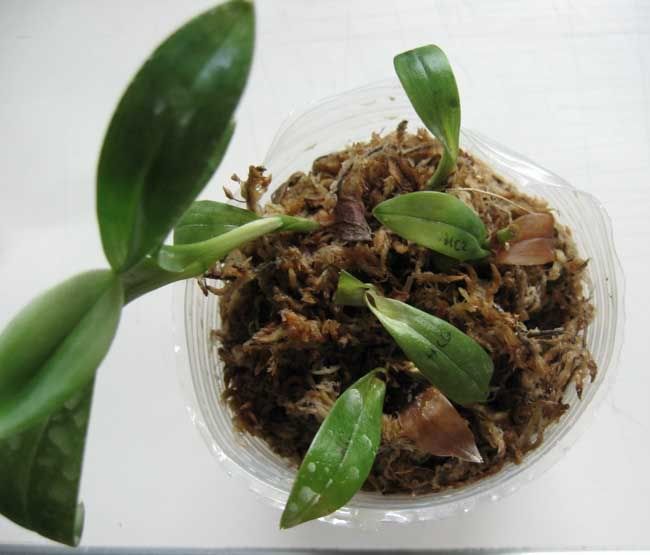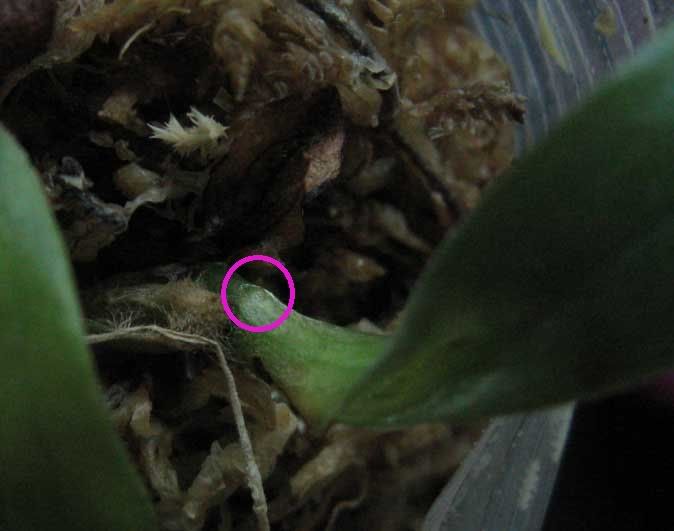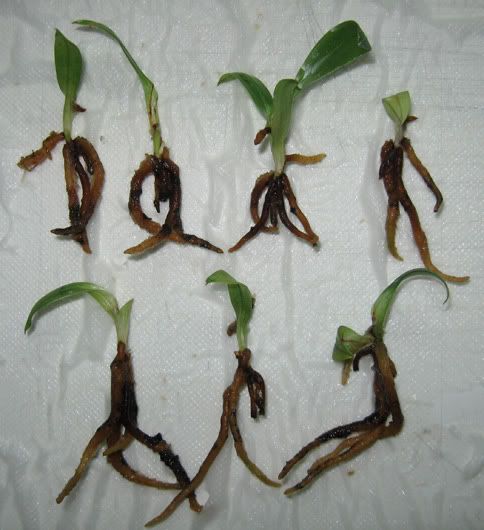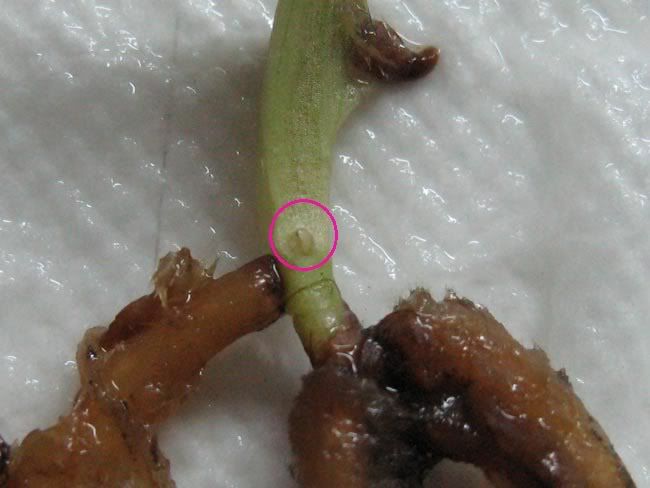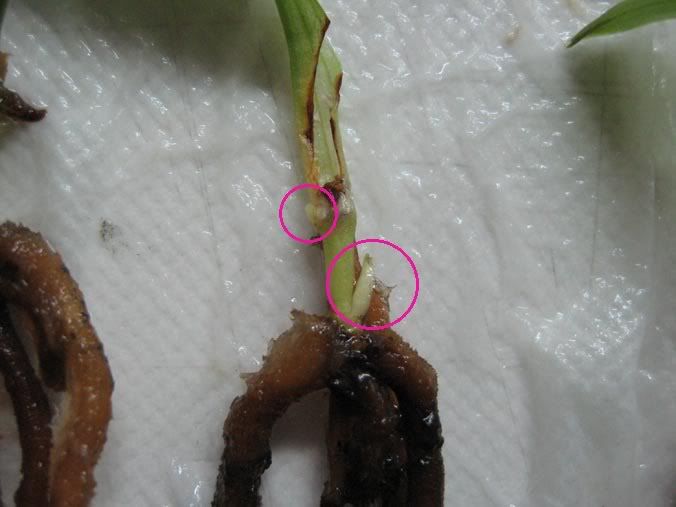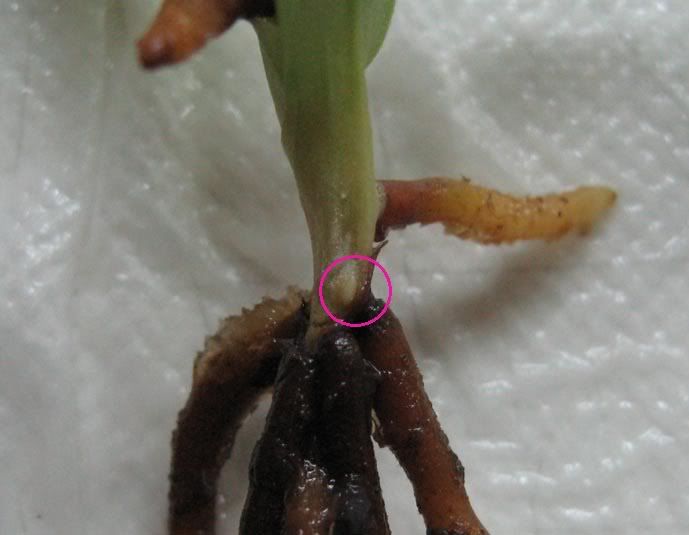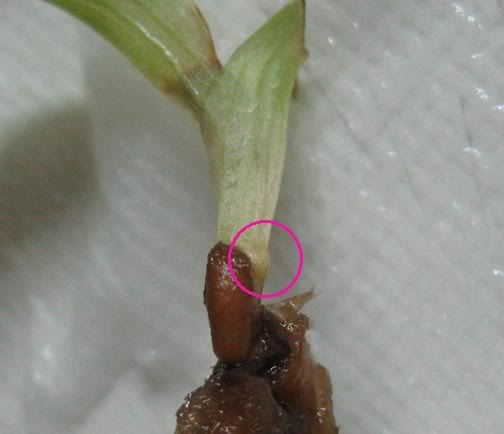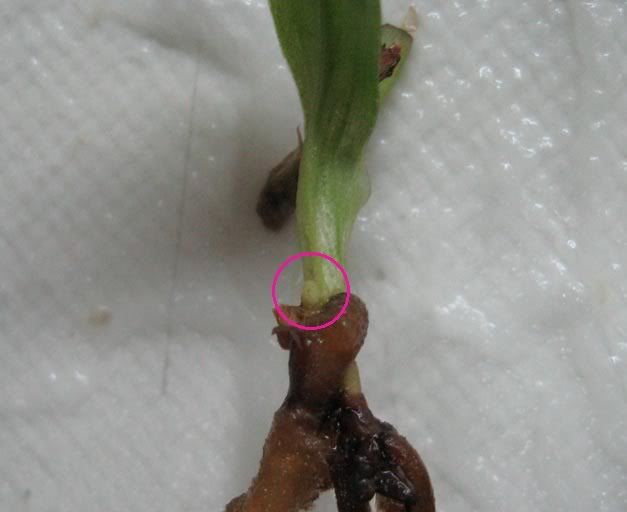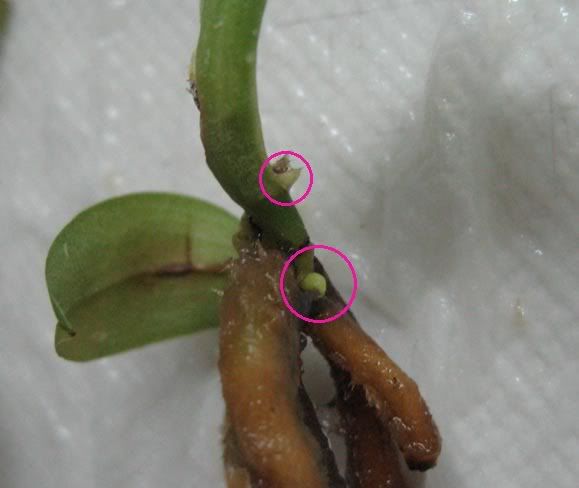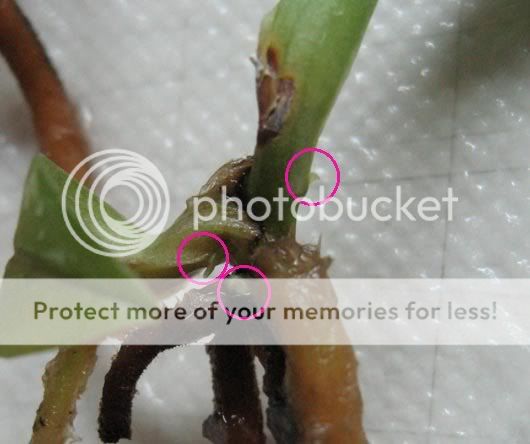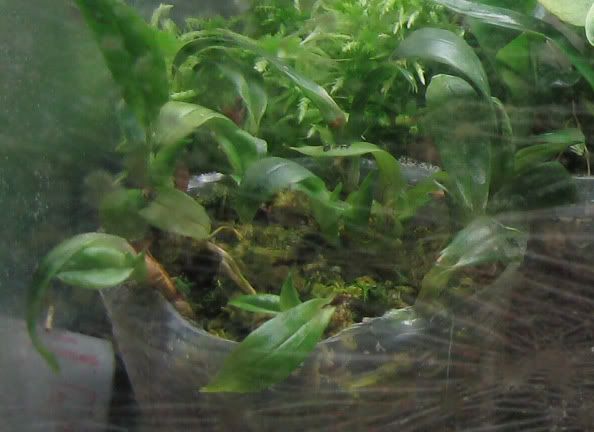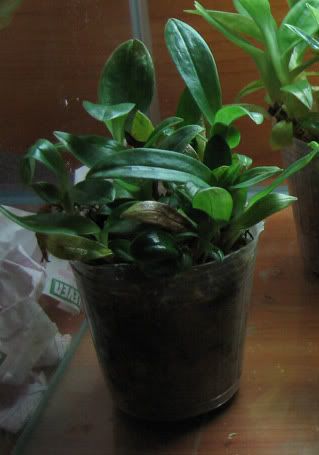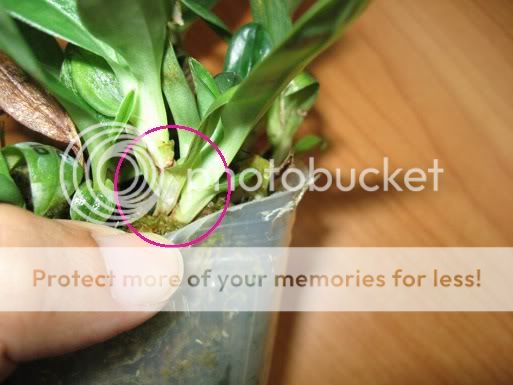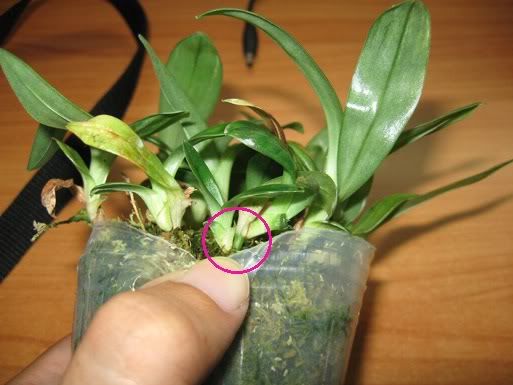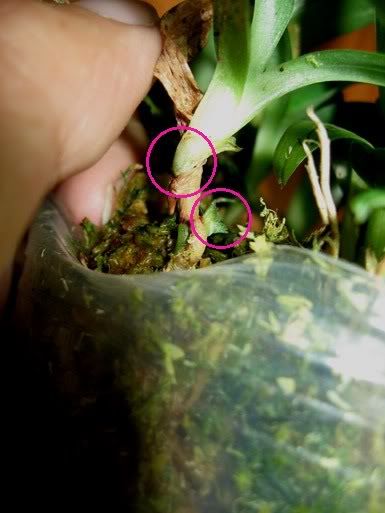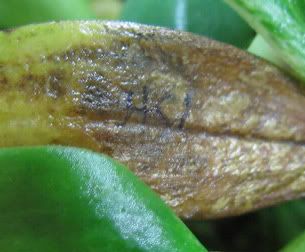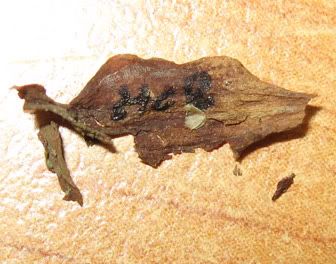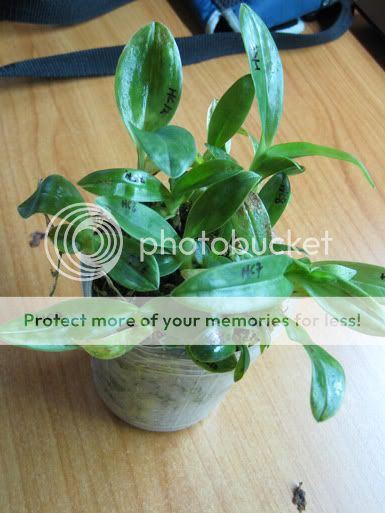hardy
Well-Known Member
Some terrestrial orchids like vanilla and the jewel orchids are so easy to
propagate by stem cutting. When conditions are favorable, even single node
cuttings of these orchids will survive. I think paphs are closely related to
these terrestrials, since these orchids have crumbly pollen and actually give
off the same odor through their sap when their tissues are bruised. I had on
hand some etiolated Paph. Hilo Citron seedlings (green maudiae) and tried
the stem cutting method on them. I'm glad to say it's been a success.
Here are some photos to share ^_^
Starting point: seedlings 14 months from flask:

I cut off the elongated stems just below the new roots:

To prevent browning, I soaked the cut ends in water for 30 minutes to let out excess sap:

The top cuttings, rather-firmly potted in sphagnum in 2" pots; Off they went to ICU, together with the stumps:


After 13 days, the roots of the stumps were still alive and growing nicely:

18 days after cutting, the stumps began to grow new shoots:

There were two growing on this one, the smaller one eventually lost the competition and did not grow:

On this one, there was still elongated stem and two good roots directly below the new shoot, so I cut it to make a single node cutting:




The stump still looked good after the second cutting was taken:

Here's how they looked after 80 days from the start:

All of them survived nicely, here's how the top cuttings look now, photo taken few days ago. Hope you like the pics, cheers! ^_^

propagate by stem cutting. When conditions are favorable, even single node
cuttings of these orchids will survive. I think paphs are closely related to
these terrestrials, since these orchids have crumbly pollen and actually give
off the same odor through their sap when their tissues are bruised. I had on
hand some etiolated Paph. Hilo Citron seedlings (green maudiae) and tried
the stem cutting method on them. I'm glad to say it's been a success.
Here are some photos to share ^_^
Starting point: seedlings 14 months from flask:

I cut off the elongated stems just below the new roots:

To prevent browning, I soaked the cut ends in water for 30 minutes to let out excess sap:

The top cuttings, rather-firmly potted in sphagnum in 2" pots; Off they went to ICU, together with the stumps:


After 13 days, the roots of the stumps were still alive and growing nicely:

18 days after cutting, the stumps began to grow new shoots:

There were two growing on this one, the smaller one eventually lost the competition and did not grow:

On this one, there was still elongated stem and two good roots directly below the new shoot, so I cut it to make a single node cutting:




The stump still looked good after the second cutting was taken:

Here's how they looked after 80 days from the start:

All of them survived nicely, here's how the top cuttings look now, photo taken few days ago. Hope you like the pics, cheers! ^_^





